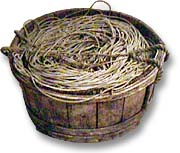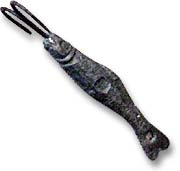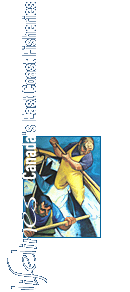|
 he stage was usually
located at the edge of the salt water and was used for many
purposes. Fishing gear such as trawl tubs, floats and buoys were
stored there and fishing hooks were baited in preparation for
fishing. During the winter, coal and some food items were also
stored there. he stage was usually
located at the edge of the salt water and was used for many
purposes. Fishing gear such as trawl tubs, floats and buoys were
stored there and fishing hooks were baited in preparation for
fishing. During the winter, coal and some food items were also
stored there.
Most importantly, the stage was used for gutting, cleaning and
salting cod and other species of fish. Four or five people worked
in the stage: a cut throat, a header, one or two splitters and a
salter. Usually, the men did the splitting and the necessary
drawing of water for the tub in which the fish were washed; the
women did the cut throat, heading and salting work.
Once the fish were gutted and cleaned, the salter would stack the
fish in layers, skin-side down in 200 pound barrels. A layer of
salt would be spread between each layer. The salt was kept in a
pound in one corner of the stage.
|

|

Trawl Tub, Herring Net
Homemade
Trawl tub with hooks, fishing line and floats, Port de Grave,
Conception Bay, early 20th century. Trawl tubs usually were
made from available staved containers such as fish casks.
(In the trawl tub) Herring net, collected from Port de Grave,
Conception Bay, early or mid 20th century.
(Newfoundland Museum)
|

|

Cod Jigger, mid 20th century
Locally Produced or Homemade
(Newfoundland Museum)
|

|
|
Salt Shovel
Homemade
Salt shovel, carved from one piece of wood, collected from
Victoria Village, Carbonear, late 19th century. It was used
by Mr. Allan Clarke, a stationer at Red Bay, Labrador, to
spread salt on cod being processed in his stage.
(Newfoundland Museum)
|
|
|



